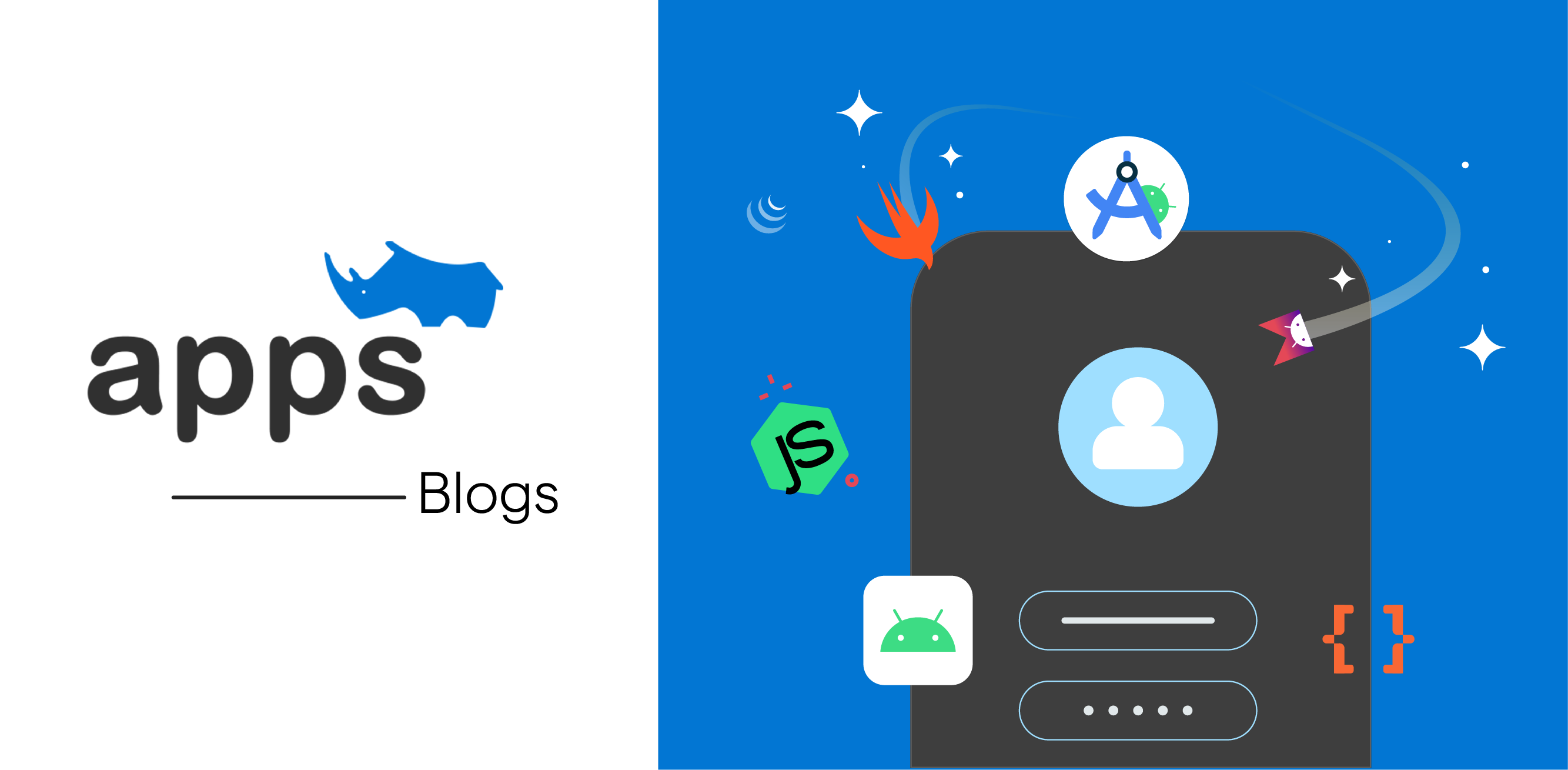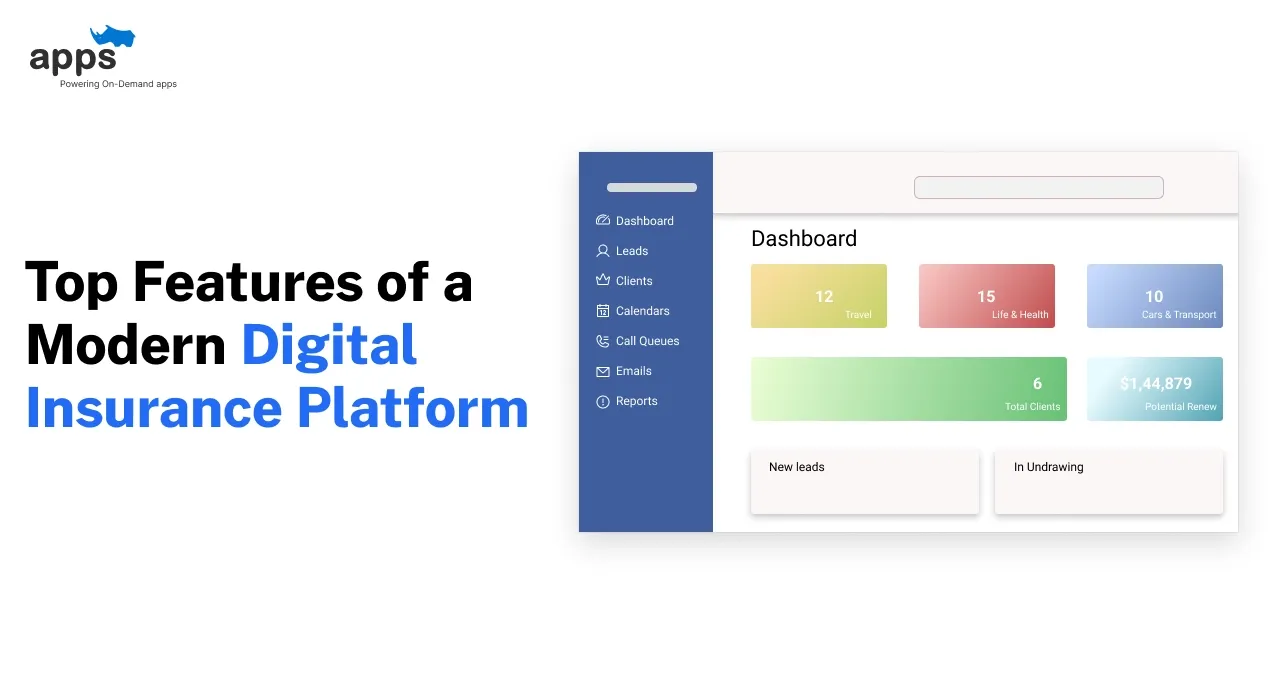- Introduction
- Feature Comparison of Attendance Management Systems
- Top 9 Must-Have Features in a Student Attendance Management System
- Why a Smart Student Attendance Management System Matters
- Frequently Asked Questins (FAQs)
Table of Contents
9 Features of Student Attendance Management System
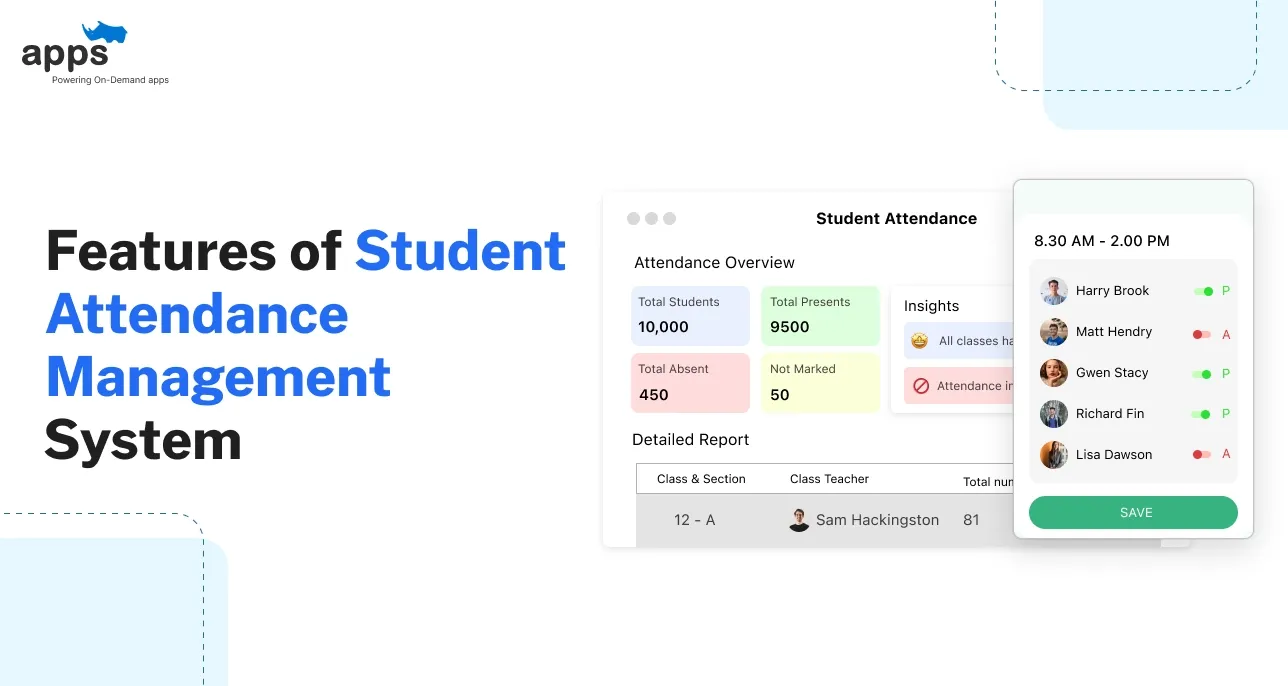
Introduction
Chronic absenteeism affects long-term performance, but automation also tackles the cost side.
By streamlining attendance tracking, institutions reduce manual workload, eliminate errors, and improve resource allocation, translating into tangible financial benefits for decision-makers and administrators.
Research shows automated systems offer “significant time and cost savings” and improve data accuracy. Teachers can log classes on a tablet or phone instead of filling out forms, and parents can be notified instantly of absences.
Modern student management systems often bundle attendance with grades and schedules, as schools typically expect these integrated attendance modules.
Below, we explore nine key features of a student attendance management system – from automated scanning to advanced analytics – and show how each solves traditional attendance challenges.
Feature Comparison of Attendance Management Systems
To help evaluate the effectiveness of an attendance management system, here is a concise comparison of its core features across three key attributes: Functionality, User Impact, and Security/Compliance.
Feature | Functionality | User Impact | Security/Compliance |
| Automated Attendance Capture | Quick roll-call via RFID/QR scanning | Saves time for teachers and students | Reduces manual errors, but may lack identity verification |
| Real-Time Dashboard & Analytics | Live tracking with reports and insights | Enables proactive decision-making for staff | Useful for audits and transparency |
| Notifications & Alerts | Sends SMS/email updates to parents and students | Improves parent-student communication | Ensures timely communication, but may need consent settings |
| SIS/Database Integration | Syncs with the central student database | Creates a single source of truth | Enhances data consistency and privacy control |
| Mobile & Offline Access | Works on mobile/tablets, even offline | Enables use in rural/low-connectivity areas | Offline data must be securely synced later |
| Biometric Security | Fingerprint/facial recognition for check-ins | Eliminates proxy attendance | High-level identity verification requires consent |
| Absence & Leave Management | Online leave applications and categorization | Simplifies documentation for students and staff | Supports policy enforcement for excused/unexcused tracking |
| Advanced Reporting | Exports data, compliance visuals | Helps with compliance and administrative reviews | Meets regulatory and school-specific standards |
| Custom Policies & Security | Configurable rules, encryption, and role-based access | Adaptable to school-specific needs and roles | Ensures data protection and supports multilingual compliance |
These features collectively enhance accuracy, transparency, and security in attendance management. From biometric check-ins to real-time dashboards and customizable policies, they support operational efficiency and regulatory compliance across diverse school environments and user needs.
Top 9 Must-Have Features in a Student Attendance Management System
Choosing the right student attendance management system means looking for features that improve accuracy, boost efficiency, and enhance school-parent communication. Below are nine essential features every modern school should prioritize for optimal attendance tracking and student oversight.
1. Automated Attendance Capture
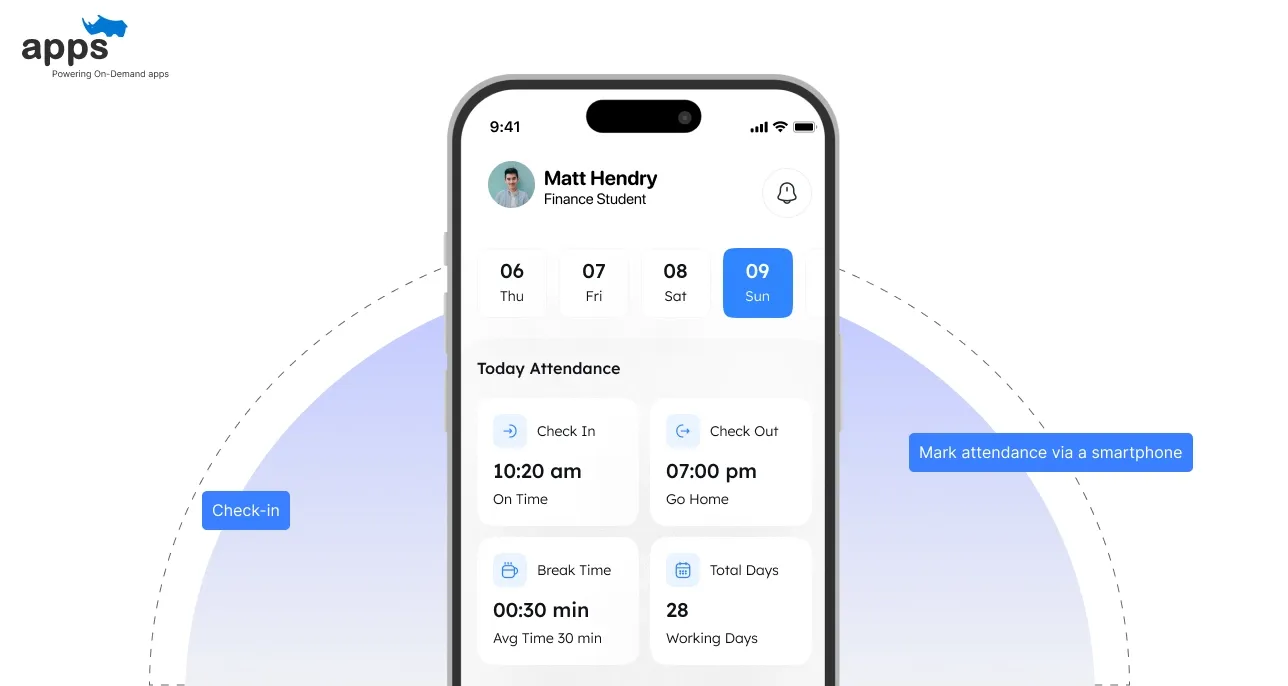
Automated attendance capture lets educators eliminate manual roll call. Teachers can use a mobile or web app to mark students as present instantly.
Some schools issue RFID or QR code ID cards for students to scan upon entry. These systems support mobile and desktop devices, making attendance tracking much faster and more reliable.
They also integrate with class schedules, so teachers simply schedule their course and record attendance against the correct session.
In any robust student attendance management system, these tools save time and prevent errors.
- Teachers mark attendance via a smartphone or portal, rather than using paper, which saves time and reduces errors.
- Each student can scan an ID card or badge (barcode/RFID). For example, Sindh province in Pakistan gave students QR-coded ID cards that teachers scan each morning.
- The system automatically timestamps each scan or login, ensuring precise records with no manual error.
- Reports show these tools dramatically reduce work: one school noted it “cuts down on the time necessary to track attendance”.
- Many systems offer an offline mode: teachers mark attendance without internet and sync data later.
- These features eliminate proxy check-ins (“buddy punching”); each student’s unique ID or login ensures genuine attendance.
2. Real-Time Dashboards & Analytics
Real-time dashboards and analytics tools turn attendance data into actionable insights. Administrators see up-to-date attendance rates for each class or grade on a visual dashboard.
They can generate custom reports instantly, filtering by class, grade, or individual student to identify trends and chronic absenteeism.
For example, one dashboard might highlight that attendance tends to dip on Mondays. These insights are standard in a comprehensive student management system, allowing managers to correlate attendance with performance.
Since attendance is stored in the student database management system, schools can cross-reference absences with grades or behavior to support students holistically.
- Generate attendance reports instantly—for example, filter data by grade, class, or student to spot trends and chronic absences.
- Dashboards display live attendance stats. Educators can compare classes or periods to find issues (e.g., high absence on Mondays).
- Analytics highlight at-risk students. Schools can intervene early to improve outcomes by tracking those who miss several days.
- Built-in charts and alerts save staff time and keep everyone informed, eliminating error-prone spreadsheets.
- Schools can set attendance goals and track progress. Meeting a monthly attendance target can be easily measured with visual charts.
- These analytics drive action: teachers and counselors can schedule meetings or interventions when a student’s attendance dips.
Suggested Reading:
Student Database vs Student Information Management System
3. Parent & Guardian Notifications
Student attendance management systems now include communication tools to involve families. When a student is marked absent, the system can instantly send SMS or email alerts to parents.
Many portals also provide parents and students with login access to view attendance records at any time.
This immediacy is key for many families — they learn about absences in real time, enabling prompt follow-up.
Like other modern student management systems, AppsRhino’s platform keeps everyone on the same page. It can even handle two-way messages (parents can confirm an excused absence or request a meeting).
- Automatically send SMS/email alerts for absences. One reviewer notes schools “notify parents when a student is marked absent”.
- Provide a parent or student portal with live attendance data. Parents can check weekly/monthly summaries of their child’s attendance and performance.
- For instance, systems send same-day SMS messages to parents when a student skips school.
- Enable two-way communication. Parents can confirm excused absences or ask questions through the platform, keeping everyone informed.
- Audit trail: Every alert and response is logged with a timestamp, so administrators see when parents were notified.
4. SIS Integration & Single Database
Deep integration with a student information management system (a student database management system) is critical. In practice, attendance data are automatically updated in each student’s record in the central database.
As a result, there is a single source of truth: one database contains schedules, grades, and attendance. Schools avoid errors from double-entry, since teachers and staff only update one system.
In such a setup, administrators can run reports that combine attendance with academic records (for example, flagging a student who is failing classes and missing school).
Many comprehensive student management systems rely on this integration to streamline workflows and enhance oversight.
- Automatic sync: attendance is recorded directly in the student information management system, eliminating separate data entry.
- Single source: the student database management system becomes a “single source of truth” where attendance, grades, and schedules all match.
- Eliminate duplication: teachers and staff no longer need to update multiple logs—everything is in one place.
- Better oversight: Administrators can run reports that combine attendance with performance or billing, since all data is centralized.
- Compliance reporting: attendance records are already centralized in the student database management system, making generating required reports for regulators easy.
5. Mobile & Offline Access
Today’s attendance systems are cloud-based and fully mobile. Any device can be used to mark attendance—teachers can use phones, tablets, or laptops at their convenience.
This flexibility is vital: many platforms include an offline mode, so attendance entries work without an internet connection and upload automatically when the connection is restored.
This ensures no class is left unrecorded in regions with spotty connectivity (for example, rural areas or overseas campuses). Remote staff can also update records from home or on the go.
A modern student management system expects this capability, as schools are increasingly adopting BYOD (bring-your-own-device) policies.
- Mobile apps and web portals mean attendance can be marked from smartphones, tablets, or laptops — wherever staff are.
- Offline mode: attendance entries work without internet and upload automatically when connection returns, ideal for schools with spotty Wi-Fi.
- Cloud backup: records are stored centrally online, protecting data and removing the need for on-site servers or maintenance.
- Remote updates: Administrators can pull up attendance charts or approve leaves on their phones, keeping things current.
- BYOD-friendly: teachers can use personal devices for attendance, lowering hardware costs and making the system accessible everywhere.
6. Biometric & ID Verification
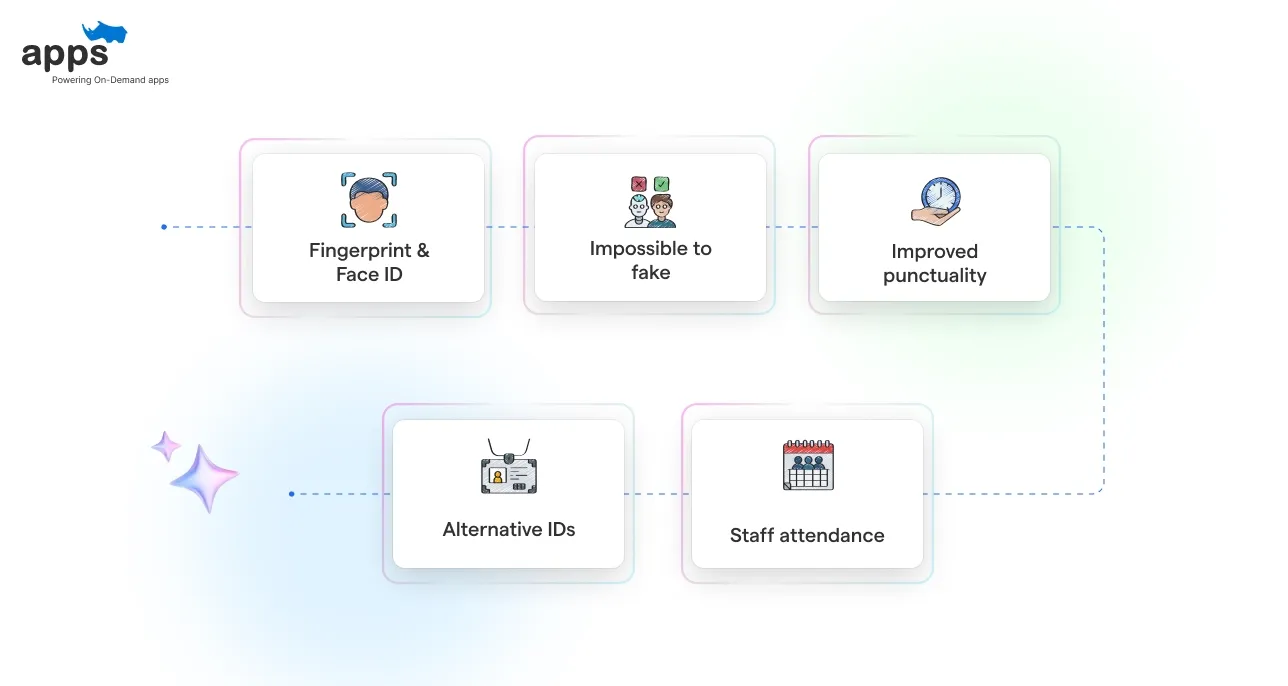
Many systems use biometric identification for cheat-proof attendance. Students scan their fingerprint or use face recognition at the door, which instantly and securely logs attendance.
This makes “buddy punching” impossible: each biometric signature is unique. Reviewers note that a biometric system makes attendance “impossible to fake”.
Schools experience improved discipline and punctuality because students are aware that they must check in themselves. A robust student attendance management system may also accept alternatives, such as RFID cards or Bluetooth beacons, for contactless check-in.
Some solutions offer portable biometric kits for multi-campus events that staff can carry, extending the system wherever students gather.
- Fingerprint & Face ID: Students use a registered fingerprint or face scan to log attendance securely.
- Impossible to fake: since each student’s biometric is unique, proxy check-ins are eliminated.
- Improved punctuality: schools report better on-time attendance, as students are required to clock in personally.
- Alternative IDs: Systems may also accept RFID tags or QR codes on phones for quick, contactless check-in.
- Staff attendance: The same biometric system can track staff arrivals, ensuring that every employee’s time is accurately recorded.
7. Absence & Leave Management
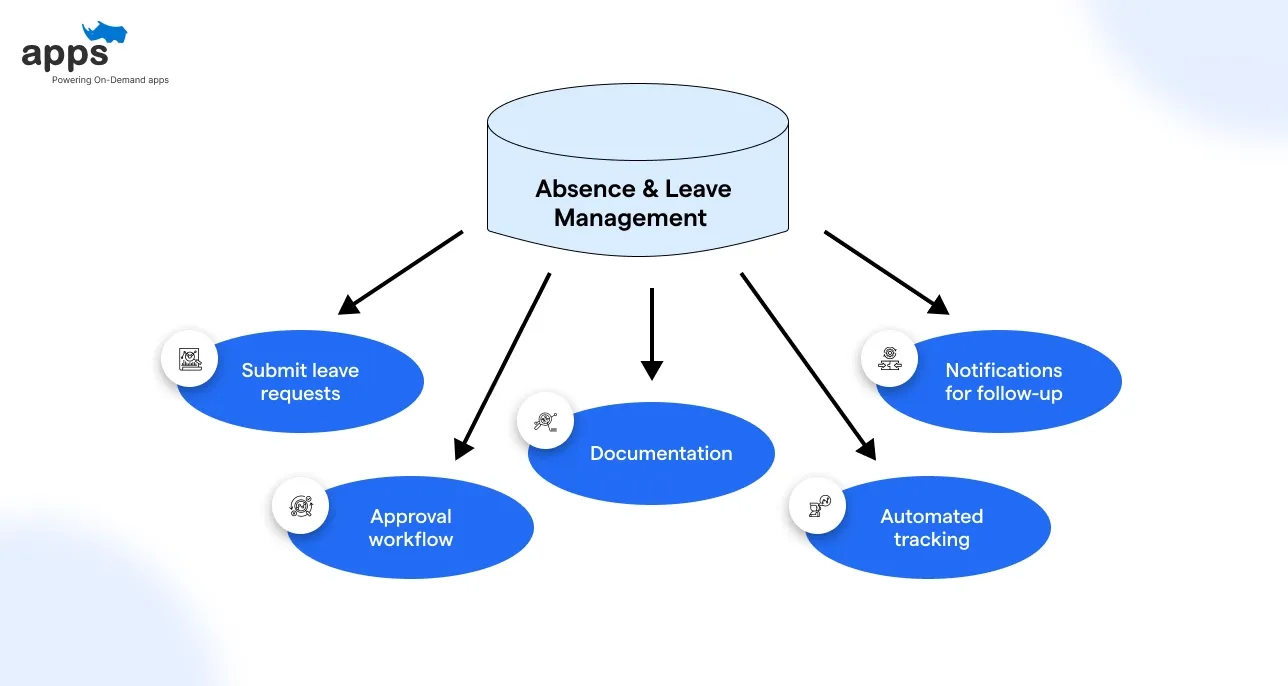
Beyond taking roll, advanced attendance systems manage absence requests digitally. Students or parents submit leave requests (for vacations, appointments, or illness) through the platform, and administrators review them online.
For example, a parent can enter the dates and reason, upload a doctor’s note, and assign the request to the appropriate approver.
The system then flags the absence as excused once approved.
This cuts out stacks of paperwork. This workflow is standard in many student management systems: everyone can see whether an absence was excused, and automatic reminders can be sent for missing notes.
- Submit leave requests: families enter the reason and dates in the system, making absences visible to school staff.
- Approval workflow: Administrators review requests and mark them excused or unexcused with one click.
- Documentation: parents upload notes or permission slips, which attach directly to the student’s record.
- Automated tracking: the software distinguishes excused vs. unexcused absences and updates attendance charts accordingly.
- Notifications for follow-up: if a student is absent without explanation, the system can alert counselors to intervene.
Suggested Reading:
Guide to Custom Student Fee Management Systems
8. Advanced Reporting & Compliance
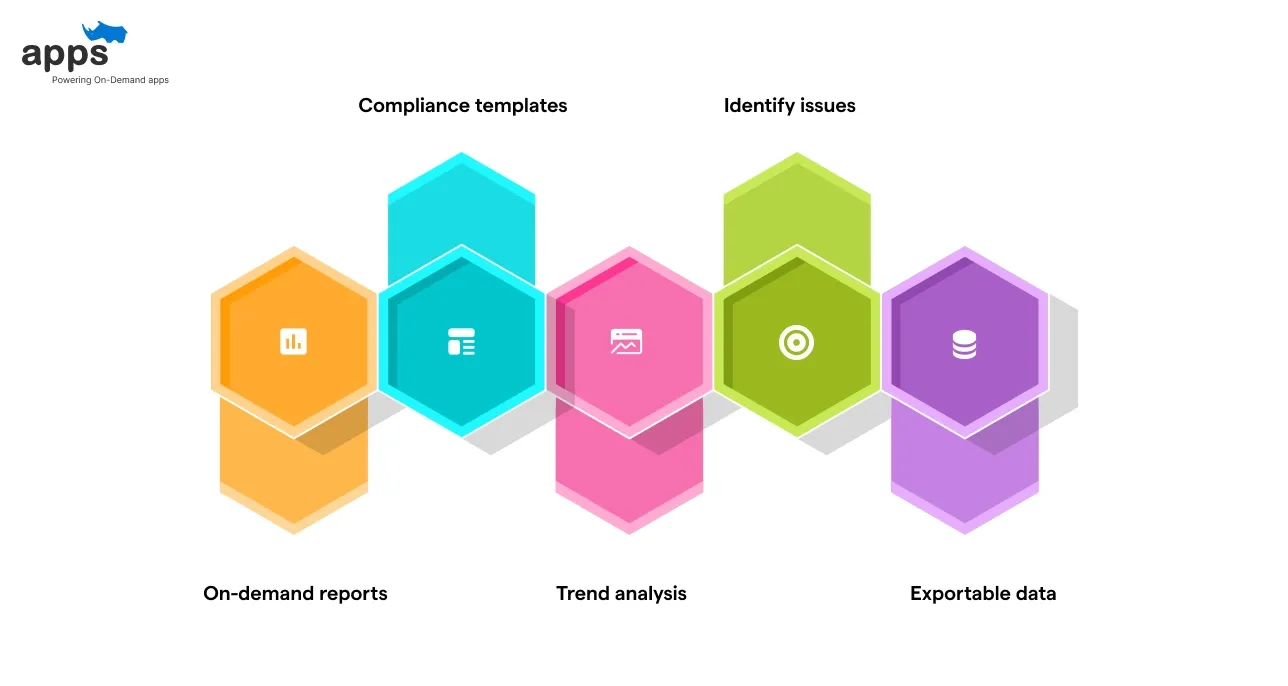
Administrators rely on attendance software for detailed reporting. They can run on-demand reports (daily, weekly, or annual) filtered by class, grade, or teacher. Many systems include built-in templates for state or district compliance reports.
For instance, a principal might generate a report of chronic absentee rates or demographic breakdowns to meet policy standards.
Automated charts and graphs make spotting trends such as seasonal attendance dips easy. All reports and raw data can be exported for analysis or record-keeping.
By automating these reports, schools save time and reduce errors compared to manual spreadsheets.
- On-demand reports: generate daily, weekly, or yearly attendance summaries with filters by class, grade, or teacher.
- Compliance templates: built-in formats for state or district regulations simplify required submissions.
- Trend analysis: Charts and graphs automatically show how attendance changes over time.
- Identify issues: filters can reveal attendance gaps, such as one grade level lagging behind others.
- Exportable data: Raw attendance logs and summaries can be exported for deeper analysis or archiving.
9. Custom Policies & Security
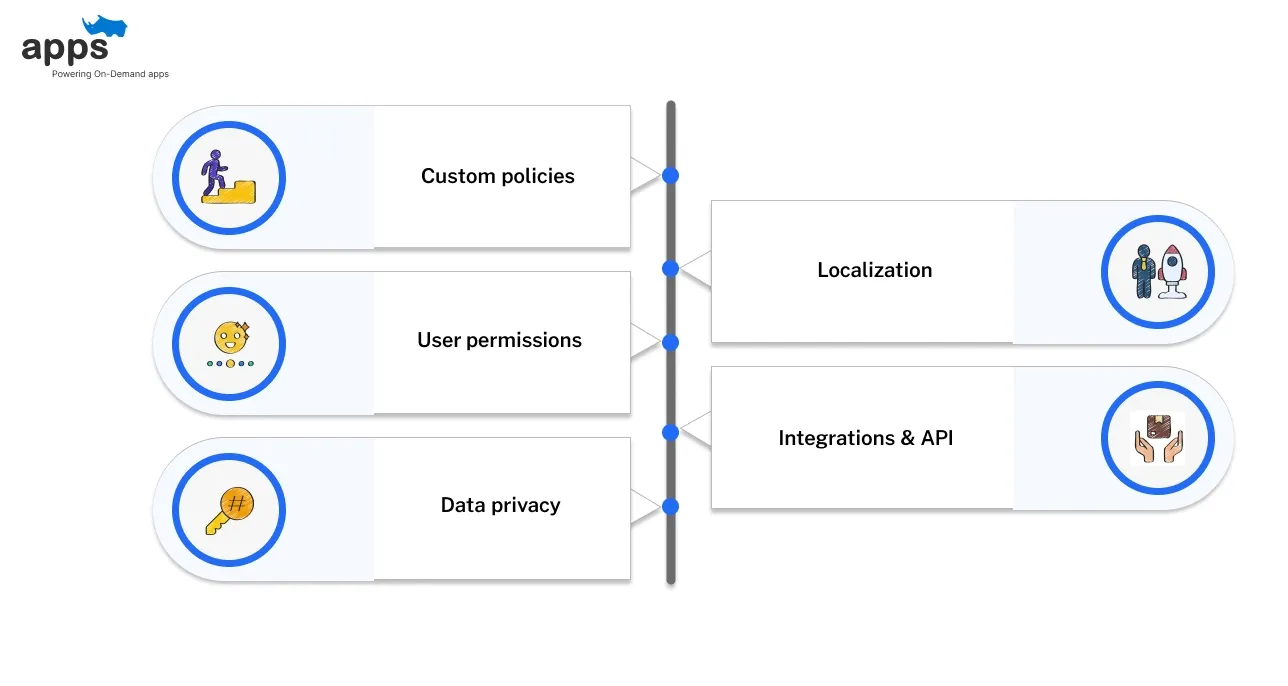
Schools demand flexibility and security in their attendance tools. An advanced system lets administrators define custom rules – for example, setting tardy thresholds, absence categories, or class lengths to match local policies.
Role-based access controls determine who can view or edit attendance. Data security is built in: attendance records are encrypted, stored in the cloud, and regularly backed up.
The system can support multiple languages and calendars for international use.
In short, a modern student management system allows schools to tailor attendance tracking to their needs without compromising safety.
- Custom policies: define school-specific attendance rules (class length, tardiness penalties, excuse codes).
- User permissions: restrict features by role so only authorized staff can edit or approve attendance.
- Data privacy: student records are stored securely (encrypted database with backups) and comply with regulations.
- Localization: The platform supports local languages, time zones, and academic calendars.
- Integrations & API: connect attendance data with other student management systems or educational apps for a unified workflow.
Why a Smart Student Attendance Management System Matters
In conclusion, a modern student attendance management system combines all these features to save time and reduce errors.
AppsRhino offers these capabilities in a complete school management solution. Our student information management system features an integrated attendance module, which is cloud-based and mobile-friendly, offering automated roll-call, real-time analytics, parental alerts, and more.
AppsRhino’s solution is fully customizable to your school’s policies and complies with privacy regulations. For example, AppsRhino’s student attendance management system is built into our broader student management platform, so attendance, grades, and schedules reside together.
Schools and districts across the US, UK, Canada, Asia, MENA, and Africa rely on AppsRhino’s student management systems to handle attendance smoothly. With AppsRhino, you can focus on education, not paperwork. For a free demo or more information, visit the AppsRhino website.
Frequently Asked Questins (FAQs)
What is a student attendance management system in education?
A student attendance management system is software that automates attendance tracking, enabling schools to digitally record, store, and analyze student attendance using features like real-time dashboards and reports.
Can a student attendance management system track tardiness separately?
Yes, advanced student attendance management systems allow schools to set custom tardy thresholds and categorize late arrivals separately, helping administrators identify punctuality issues and enforce policies effectively.
Is it possible to integrate attendance and learning management systems (LMS)?
Many student attendance management systems offer API integrations that sync with LMS platforms, enabling seamless data sharing across attendance, academic performance, and course engagement metrics.
How do cloud-based attendance systems improve data accessibility?
Cloud-based student attendance management systems offer secure, anytime access to records from any device, ensuring staff, students, and parents stay updated with real-time attendance data.
Are student attendance management systems scalable for large institutions?
Yes, robust systems are designed to handle thousands of students across multiple campuses, making student attendance management scalable and efficient for universities, school districts, and educational networks.
Table of Contents
- Introduction
- Feature Comparison of Attendance Management Systems
- Top 9 Must-Have Features in a Student Attendance Management System
- Why a Smart Student Attendance Management System Matters
- Frequently Asked Questins (FAQs)


